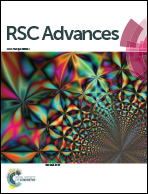Development of cell-laden 3D scaffolds for efficient engineered skin substitutes by collagen gelation
Abstract
Conventional collagen scaffolds, which were fabricated like spongy types, have been used widely to promote wound repair since they can enhance various cellular activities including cell proliferation and migration, and even guidance of near cells to work as normal tissues functionally. Fabrication technology of 3 dimensional (3D) scaffolds including solid free-form fabrication and rapid prototyping methods is developing all the time in order to promote wound repair efficiently. In addition, researchers have been studying scaffolds containing other components, such as various cells, growth factors and related materials. In this study, we modified rapid prototyping methods and then set up a cell printing system, which is able to fabricate 3D cell-laden scaffolds for better skin tissue regeneration. These scaffolds have a layered structure and were manufactured using collagen, having optimal biocompatibility, and human primary skin cells including epidermal keratinocytes and dermal fibroblasts. Accordingly, these scaffolds are capable of proliferation and migration of keratinocytes and fibroblasts effectively. Therefore, we suggest that these cell-laden scaffolds can be used as engineered skin substitute (in other words, artificial skin), sufficiently.


 Please wait while we load your content...
Please wait while we load your content...